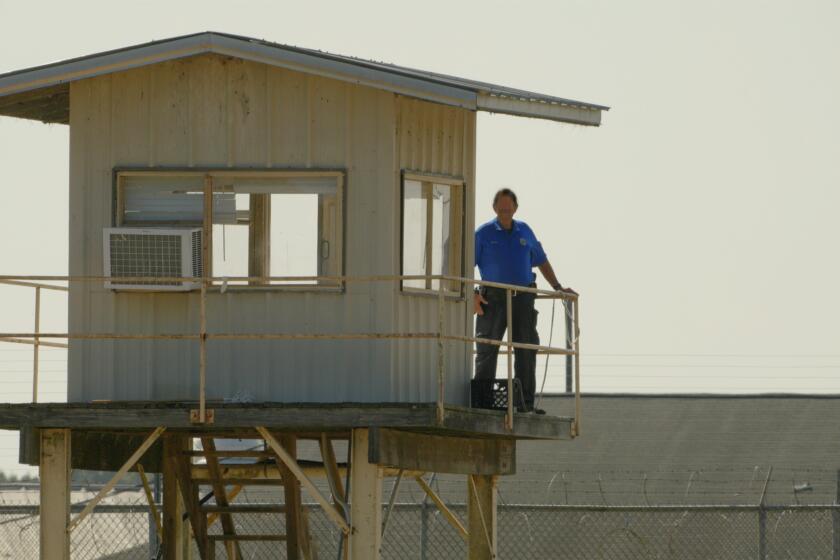Swimming out of troubled water
- Share via
The lasting mark my father, a Holocaust survivor, has made on me is not from the tiny bits he has shared about his past, but from what he hasn’t said. My dad has always told me that he had to draw an imaginary line between his past and his present to be able to emotionally survive and live his life. Since I understand his coping mechanism, I’ve never really delved into deep conversations about his personal history. One of the few aspects of his early years he would mention was the swim club Hakoah. Yet it wasn’t until I saw the documentary “Watermarks,” which opens here Friday, that I learned how it saved his life.
My dad, Fred Marcus, began swimming in Vienna as a little boy. As a teen, he participated at the Hakoah Vienna Sport Club, and eventually escaped the Nazis by emigrating to Uruguay, where he became a national swimming and diving champion for longer than a decade. He kept on swimming when he emigrated to the U.S. in the 1950s, and in the early 1970s taught me (at 3) to swim freestyle. Today, at age 83, he’s still swimming.
I’ve never prodded my dad about his past, but after we saw “Watermarks” together last week at the L.A. premiere, we began to talk about it. He delved deep into his memory and reached into his private drawer of swimming mementos to show me saved Hakoah items I never knew existed -- a cloth bathing suit and a patch bearing the Hakoah name and a Jewish star, competition medals, and a Hakoah newsletter from the 1950s published to keep its members connected around the globe.
“Watermarks,” directed, written and produced by Yaron Zilberman, unearths the previously untold story of the Hakoah Vienna Sport Club and its formation in 1909 in response to the Aryan Paragraph that forbade Austrian sports clubs from accepting Jewish athletes.
Zilberman, 38, an Israeli Jew who’s lived on and off in the U.S. the last 12 years, stumbled upon the story while doing research for a film he was producing on the world’s greatest soccer stars. He learned about the Hakoah’s 1920s-era soccer team, which gained acclaim as the first team to defeat an English team on English soil. With no men alive from that team, Zilberman chose to concentrate on the living members of the women’s swim team that was the “flagship of the club” during the 1930s.
Zilberman felt a personal connection to the female swimmers, who reminded him of his late grandmother, a Holocaust survivor and one of the people the film is dedicated to.
Almost all of the women featured in the film are swimmers whom my dad knew as a teenager. The film follows how swim team president Valentin Rosenfeld and women’s swimming team head coach Zsigo Wertheimer arranged through illegal and legal means to get their female swimmers and most other Hakoah athletes (including my dad) out of Nazi-occupied areas.
Discovering the Hakoah (“The Strength” in Hebrew) was a “complete surprise” for Zilberman, who said in a phone interview that his own image of Jews prior to World War II had been either an “Orthodox, a bohemian, philosophers, artists, but definitely not sports people.” For Jewish young people who were used to being discriminated against, the Hakoah served as a place where they could fit in.
Despite their many athletic successes, the Vienna Hakoah came to an end when Austria was annexed by Nazi Germany in 1938 during the Anschluss. My dad recalls going to the Hakoah’s Dianabad swimming pool after the Nazis had taken it over and being confronted by a sign that read “No Jews allowed.”
Soon after, his family fled to Brussels, where they essentially lived in hiding for a year. It was there that my dad received the most significant letter of his life.
He recalls: “Dr. Rosenfeld notified us there was a possibility to get out of Europe, to emigrate, and if I was interested I should go to the Uruguayan consulate.” One week later, the 18-year-old began the monthlong journey there by boat -- with only the clothes on his back, one suitcase, 10 American dollars and his father’s gold and lapis ring, given to him in case he needed to sell it for cash.
That was the last time that my dad would see his father, who was first interned by the Nazis in the Pyrenees and later died at Auschwitz just days before it was liberated. That 10 dollars soon went to the family of two Hakoah swimmers, who took him in in Montevideo, but he still wears his father’s ring today.
Zilberman believes that Rosenfeld’s story of saving the Hakoah members is “by itself a film” and has already been approached by a Hollywood producer who wants to make a movie about the Hakoah’s escape operation.
Although the Hakoah Holocaust survivors do not bear the tattooed mark forced upon many concentration camp survivors, Zilberman says “at the same time they also have a mark.” For someone like my dad, Zilberman feels that mark “is below the flesh, in a way. It’s a watermark; you don’t see it, but it’s there.”
I’ve always intuitively felt that mark within my dad, but now because of Zilberman’s film, his long-buried history has been allowed to surface. Now when I see him swim, I know that each stroke has sustained his survival.
Lydia Marcus is senior film critic at Frontiers Newsmagazine.
More to Read
Only good movies
Get the Indie Focus newsletter, Mark Olsen's weekly guide to the world of cinema.
You may occasionally receive promotional content from the Los Angeles Times.










